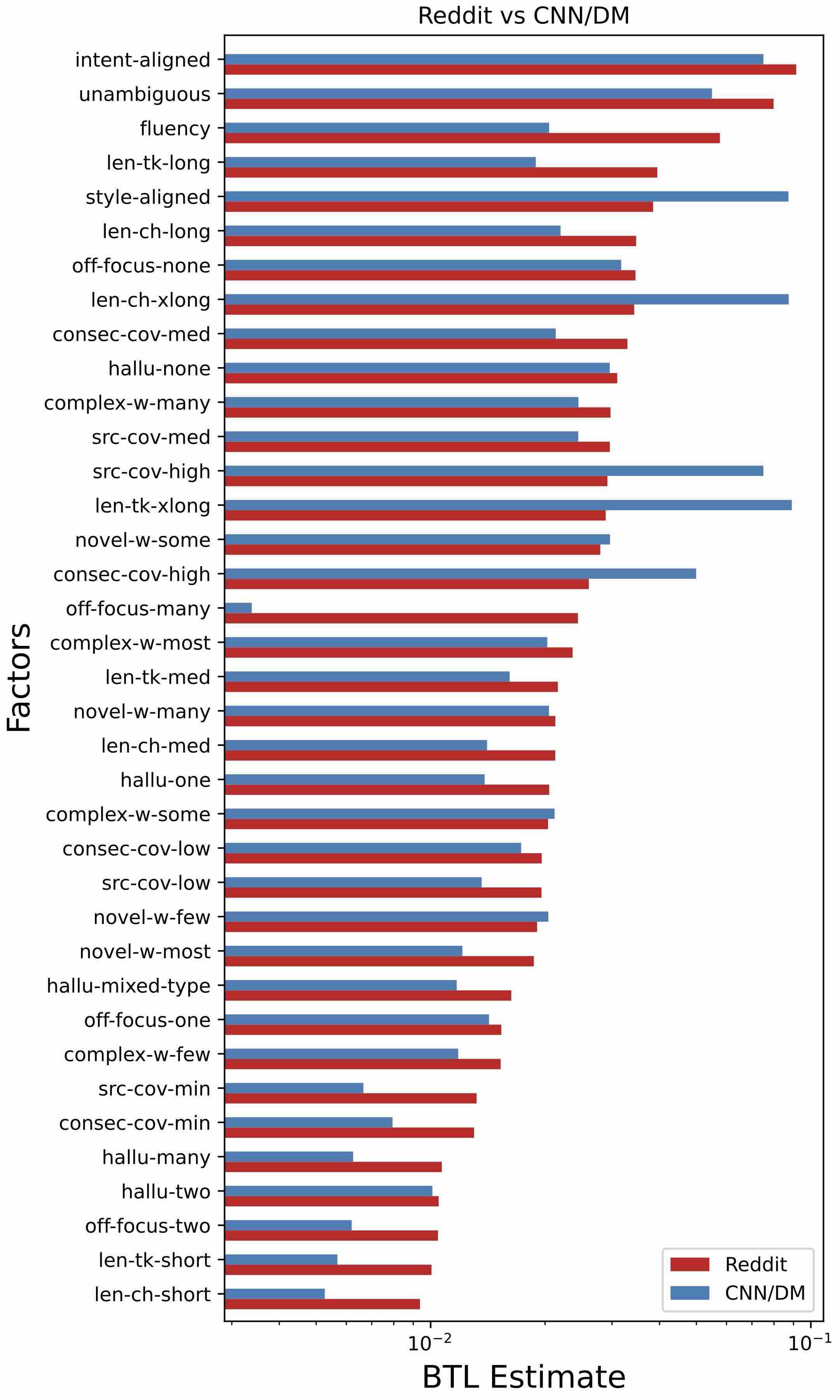Bradely Terry Luce Model

- The BTL model is frequently used in sports to rank players within a league
-
To identify the dominating factors that influence human judgement, we use BTL model to rank factors that characterize system outputs
- When one summary is favored over another, $ 𝑆_1^{(𝑛)}≻𝑆_2^{(𝑛)} $, we assume all of its factors win over those of the other summary
- If there are same factors appears in both summaries, we assume they cancel each other out and exclude them from list of factors
- We then represent the outcomes of these comparisons using a win-loss matrix \(W: 𝑤_{𝑖,𝑗} (𝑖, 𝑗∈𝑀)\)
- The BTL model allows us to estimate the relative importance of these factors $ (𝑝_{i})_{𝑖=1}^𝑀 $, which is iteratively updated (Eq. (1)) to maximize the data likelihood and then renormalized (Eq. (2))
Influential Factors Ranking

Cross-domain Preferences Comparison

Factors impacting summarization tasks can vary across different source domains. For news summarization, which is shown in blue, lengthier summaries are often favored {len-{ch|tk}-xlong}, as is comprehensive coverage of the source content {{src|consec}-cov-high}. The style of the summary reflects that of the original article {style-aligned}, and off-focus content tends to have minimal impact than {off-focus-many}